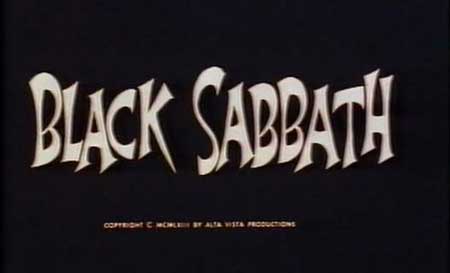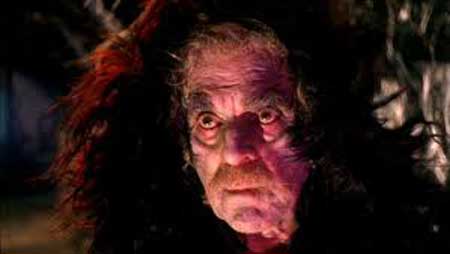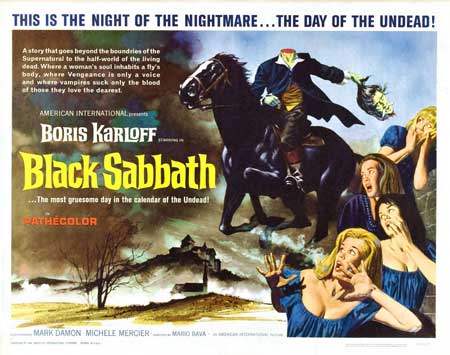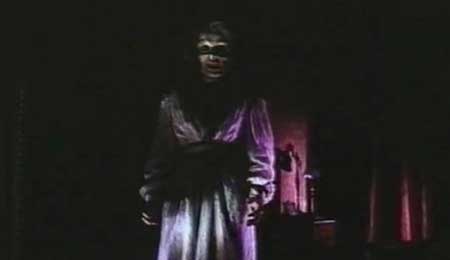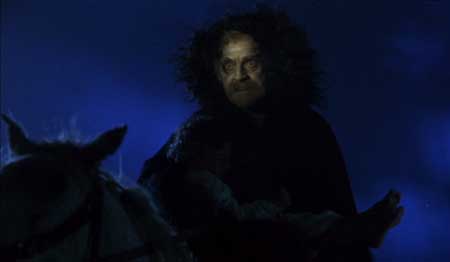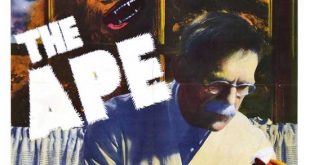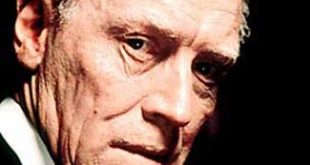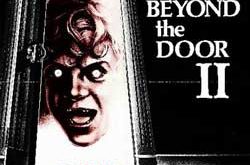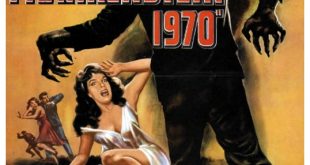SYNOPSIS:
A beautiful woman is terrorized by call from an ex-lover who has escaped from prison for the pleasure of killing her… A family becomes a feeding ground when their father returns home wounded after ridding the countryside of a hideous vampire… A nurse is haunted by reproaches from the Beyond after stealing a ring from the finger of a dead medium! Join Boris Karloff as he hosts (and stars in) this trilogy of terror tales.
REVIEW:
Black Sabbath had a lot going for it, even back in 1963. It was directed by the great Italian horror filmmaker Mario Bava, who was in his prime. It stars Boris Karloff in one of the best non-Frankenstein roles of his storied career. To top it off, it’s an anthology. One of the best of its kind, Black Sabbath ranks among the likes of Creepshow, Trick ‘r Treat and Tales from the Crypt. Oh, and arguably the best heavy metal band of all time took their name from the film’s title.
The first segment, titled “The Telephone,” may very well have inspired Kevin Williamson in writing the famed opening scene of Scream. Rosy (Michele Mercier) is an attractive, young woman who is alone in her apartment one night when the telephone rings. The man on the other end knows her name, he can even see her every movie and he makes it no secret that he wants to kill her. Reminiscent of an episode of Alfred Hitchcock Presents, the story packs a couple of good twists and turns in its short run time.
Cocking it at around 40 minutes, “The Wurdalak” is the longest of the tales. The period piece takes place in 19th century Russia and concerns the legend of the wurdalak. Essentially vampires, one character describes wurdalaks as bloodthirsty corpses that “yearn for the blood of those they loved most when they were alive.” The only way to stop one is by stabbing it through the heart.
Karloff plays Gorcha, the wurdalak in question, who returns from a 5-day excursion with an appetite for his family’s blood. He’s a joy to watch, as always, but it’s the cinematography that really stands out. Ubaldo Terzano (Deep Red) is credited as the film’s cinematographer, but Bava no doubt had a hand in the look. Not only is it well shot, but it’s beautifully lit with vivid colors that make many frames to look like paintings. The close-ups on Karloff’s haggard appearance are both chilling and fit for framing.
“The Drop of Water” is the third and final story. When a nurse (Jacqueline Pierreux) steals a ring from a recently-deceased medium, she finds that the spirits are not on her side. With very little dialogue, the segment relies on brilliant sound design and imagery to create atmosphere – and it’s a smashing success. I wouldn’t be surprised to learn that the dead woman was the source of nightmares for many in the ’60s.
Black Sabbath is now available on Blu-ray, courtesy of Kino Lorber. Although the release, unfortunately, lacks special features, it’s worth an upgrade for the high-definition transfer alone. It was mastered from the 35mm negative of the uncut, Italian-language version (which is presented in a different order than the English release), and the already-gorgeous photography looks better than ever.
The beauty of Black Sabbath is that each story has an entirely unique feel – thriller, gothic horror and silent film, respectively – and they all remain entertaining in their own way. The film is bookended by an intro and outro by Karloff; the campy ending doesn’t fit the otherwise-serious tone of movie, but it’s nice to see the lighter side of things. If you’re unfamiliar with one of the all-time best horror anthologies or merely want to experience it in glorious high definition, Black Sabbath is certainly worth the purchase.
Black Sabbath (1963)
 Horror News | HNN Official Site | Horror Movies,Trailers, Reviews
Horror News | HNN Official Site | Horror Movies,Trailers, Reviews

